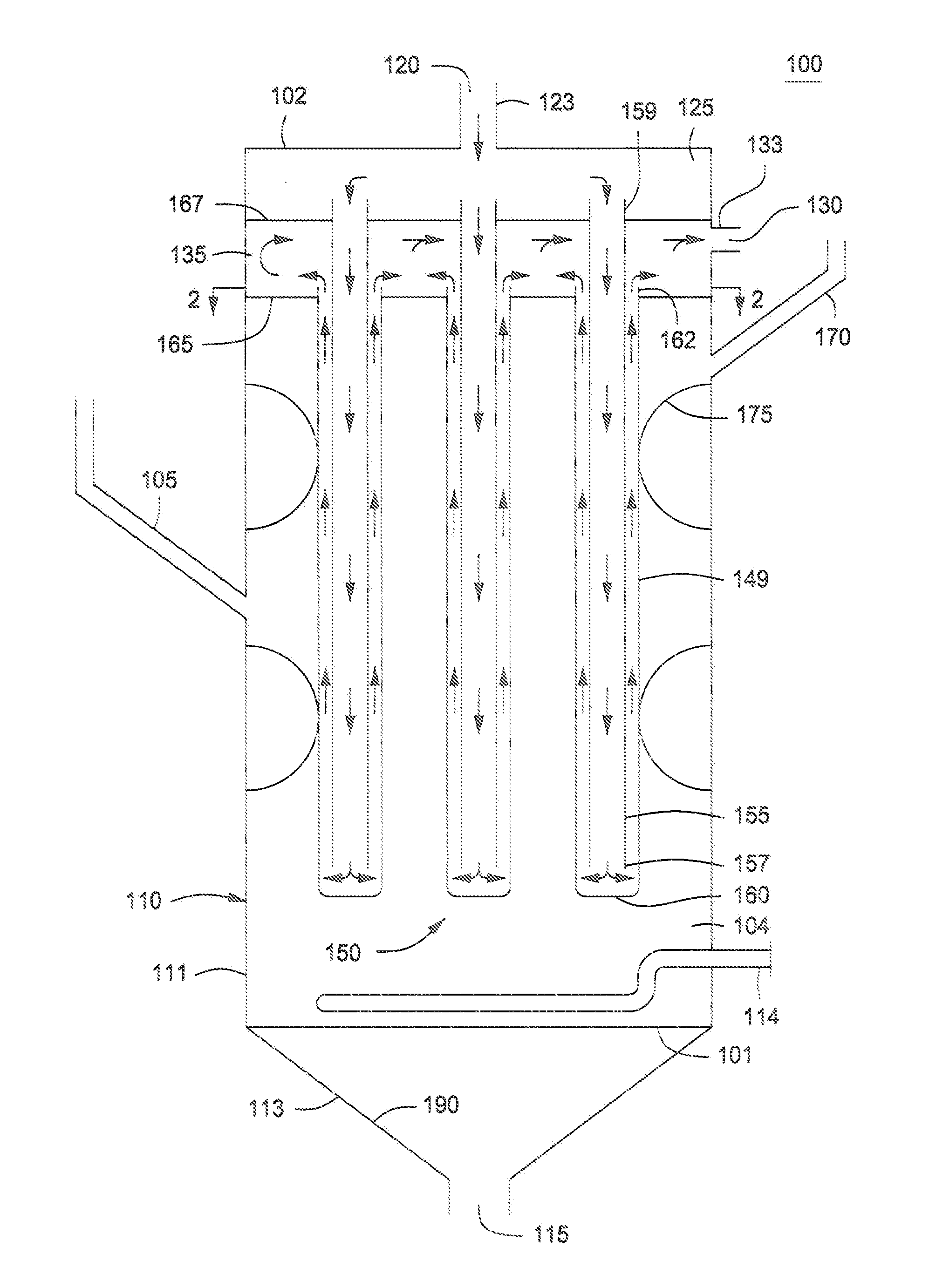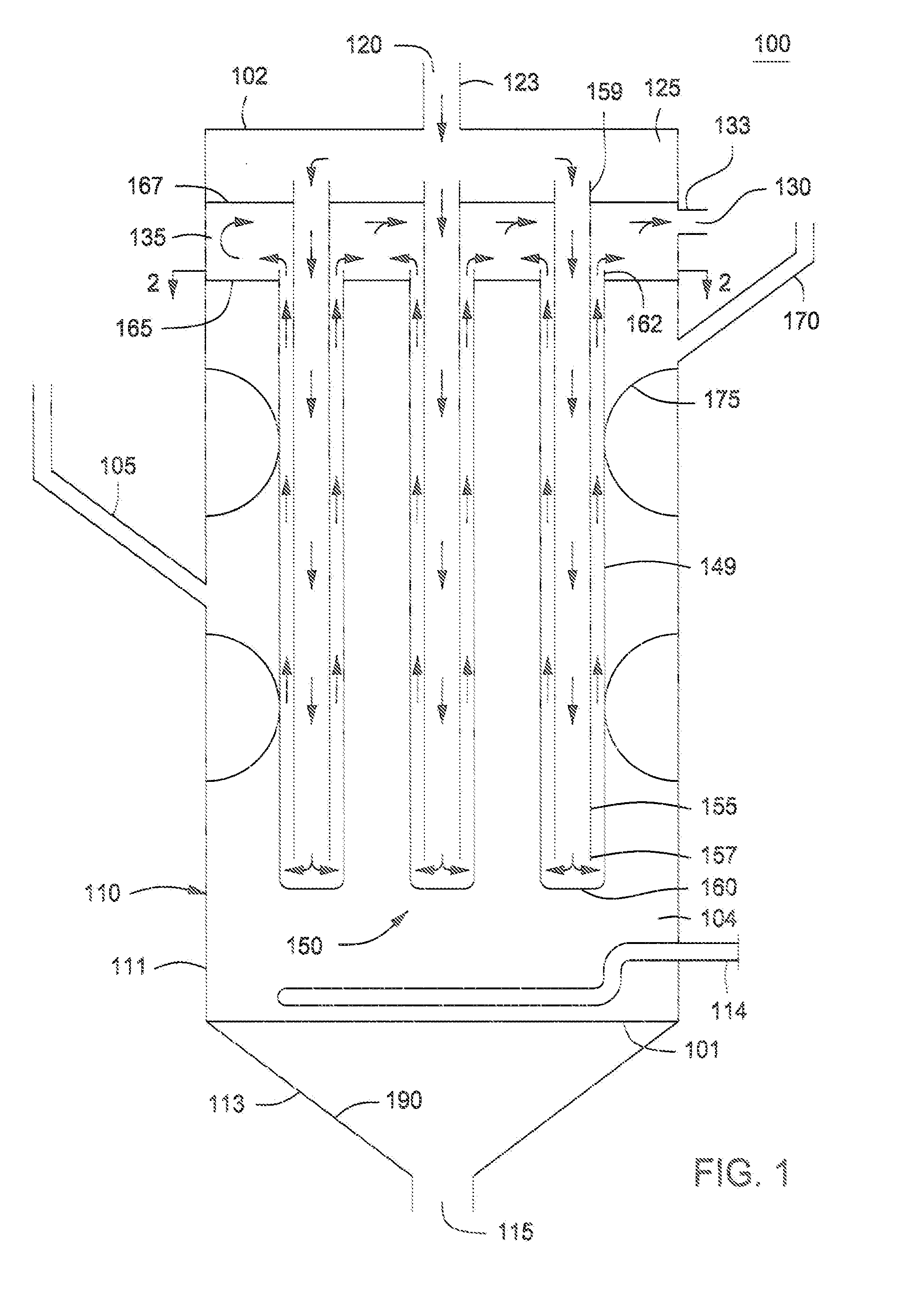Methods and Systems for Cooling Hot Particulates
a technology of hot particulates and cooling methods, applied in the direction of lighting and heating apparatus, instruments, fluid pressure control, etc., can solve the problems of large fluidized bed, inability to expand or contract, and difficult to meet the typical cooling requirements of the system
- Summary
- Abstract
- Description
- Claims
- Application Information
AI Technical Summary
Benefits of technology
Problems solved by technology
Method used
Image
Examples
Embodiment Construction
[0014]Methods, systems, and apparatus for cooling particulates are provided. The method for cooling particulates can include introducing particulates to a heat exchanger containing a tube bundle having a plurality of tubulars, introducing a coolant to the plurality of tubulars through a coolant inlet, flowing the particulates through the shell side of the heat exchanger, and contacting at least a portion of the particulates with the tube bundle. The method can also include recovering a heated coolant from the coolant outlet and recovering cooled particulates from the particulate outlet. The heat exchanger can include a vessel having an elongated shell having a first end, a second end, one or more sidewalls, a shell side particulate inlet disposed in the one or more sidewalls for receiving particulates, a shell side particulate outlet disposed adjacent the second end for discharging cooled particulates, and a tube bundle including a plurality of tubulars disposed within the vessel. T...
PUM
 Login to View More
Login to View More Abstract
Description
Claims
Application Information
 Login to View More
Login to View More - R&D
- Intellectual Property
- Life Sciences
- Materials
- Tech Scout
- Unparalleled Data Quality
- Higher Quality Content
- 60% Fewer Hallucinations
Browse by: Latest US Patents, China's latest patents, Technical Efficacy Thesaurus, Application Domain, Technology Topic, Popular Technical Reports.
© 2025 PatSnap. All rights reserved.Legal|Privacy policy|Modern Slavery Act Transparency Statement|Sitemap|About US| Contact US: help@patsnap.com



